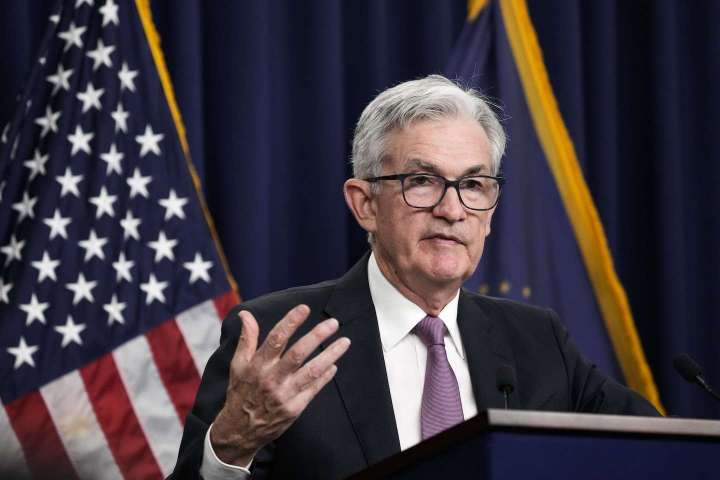When it comes to interest rates, the past truly is a different country. In September 1981, the yield on a 10-year Treasury note was nearly 16 percent. If you wanted to borrow money to buy a car, or a house, you needed to pay north of 17 percent in annual interest. Even the overnight lending rate for banks — the ultimate in short-term loans — was over 15 percent, annualized.
Those rock-bottom interest rates weren’t going to last forever

Much of this, obviously, was driven by the great inflation of the 1970s. But inflation had actually peaked a year before; in 1981, it ran just a bit over 10 percent. Borrowers of the era were paying real, inflation-adjusted interest of more than 5 percent.
Over the past 40 years, those real rates have steadily declined, and since the global financial crisis of 2008, they have mostly hovered in the low single digits. This is not just lower than rates were in the 1980s, when an aggressive Fed under Paul Volcker was trying to wring excess inflation out of the system; it is lower than rates were before the Great Inflation. And I worry that it has set us up for a wrenching adjustment.
This long moderation has reshaped our economy so thoroughly that most of us don’t even realize how much is founded on rock-bottom rates. Are you sitting on a nice chunk of home equity? You can thank the falling price of borrowed money. Are you hoping to collect a government pension? Fund managers might well have been pushing your money into riskier asset classes, “reaching for yield” because traditional safe investments such as bonds no longer pay enough to keep the fund solvent. Have you ridden in an Uber or streamed movies on Netflix? That reach for yield drove, among other things, a venture capital boom now screeching to a halt as the price of money ticks up.
Low interest rates have also reshaped our politics. After the financial crisis, some economists urged the government to be more aggressive about using borrowed money to restore full employment. At first, this was an argument about stimulus, but it soon became about things such as infrastructure investment — with borrowed money so cheap, wasn’t it stupid not to make productivity-enhancing investments in our future? Over time, it became an argument against any kind of fiscal restraint whatsoever, as I discovered last week when I questioned the wisdom of borrowing $500 billion to forgive student loan debt. Why does it matter, interlocutors asked, when the government can borrow the money practically for free?
Follow Megan McArdle‘s opinions
FollowBecause, I replied, the money might not always be free. And what happens then?
That’s a question we should probably all be asking, about more than just the federal debt.
Don’t get me wrong; the federal debt itself is potentially a massive problem. Between the Great Recession and the pandemic and a bunch of profligate years in between, total debt held by the public now roughly equals our annual GDP. Which means that every 1 percent increase in the real interest rate is another 1 percent of our annual income that we’ll have to pay, not to enjoy more benefits but to service the money we’ve already spent. That change wouldn’t happen all at once — the weighted average maturity of Treasury debt is currently about six years — but it could happen fast enough to require a rapid, very painful fiscal adjustment.
That adjustment would be pretty hard if just the interest rates on federal debt were rising — say, because investors became concerned about our ability to repay a growing pile of debt. But it would get harder still if the economy were seeing a broader shift in real interest rates, back toward more historically normal levels. The government would have to raise taxes, or cut benefits, just as home values were falling, debt-dependent industries such as construction and auto manufacturing were cratering, financial markets were undergoing a sharp adjustment, and consumers and companies were cutting back on spending.
We’ve already previewed a little of that pain with rates rebounding from pandemic lows. But adjusted for inflation, rates are still low by historical standards; the Cleveland Fed’s 10-year real rate is still roughly where it was in 2018. Just reverting to pre-Great Recession levels would mean rates more than a point higher than they are now.
Is that likely to happen? It’s hard to say, because no one is exactly sure why real rates have declined so far. Myriad explanations have been offered, from ultra-loose monetary policy, to aging societies desperate to save, to China recycling its export profits into Western securities markets.
What we can say is that there’s reason to fear that many of those factors will move in the wrong direction. In the face of inflation, central banks are tightening monetary policy; in the face of geostrategic competition, both government and companies are looking for ways to decouple from China. Aging societies will eventually start drawing down their savings. Which suggests that we should at least start thinking about a world where money, and life, get somewhat less easy.






